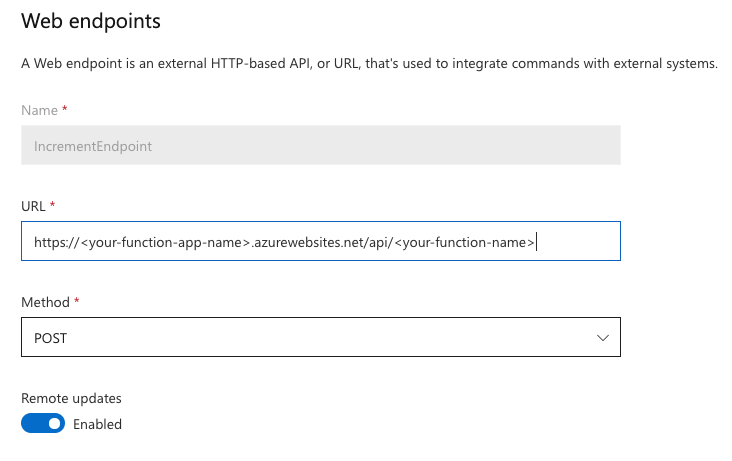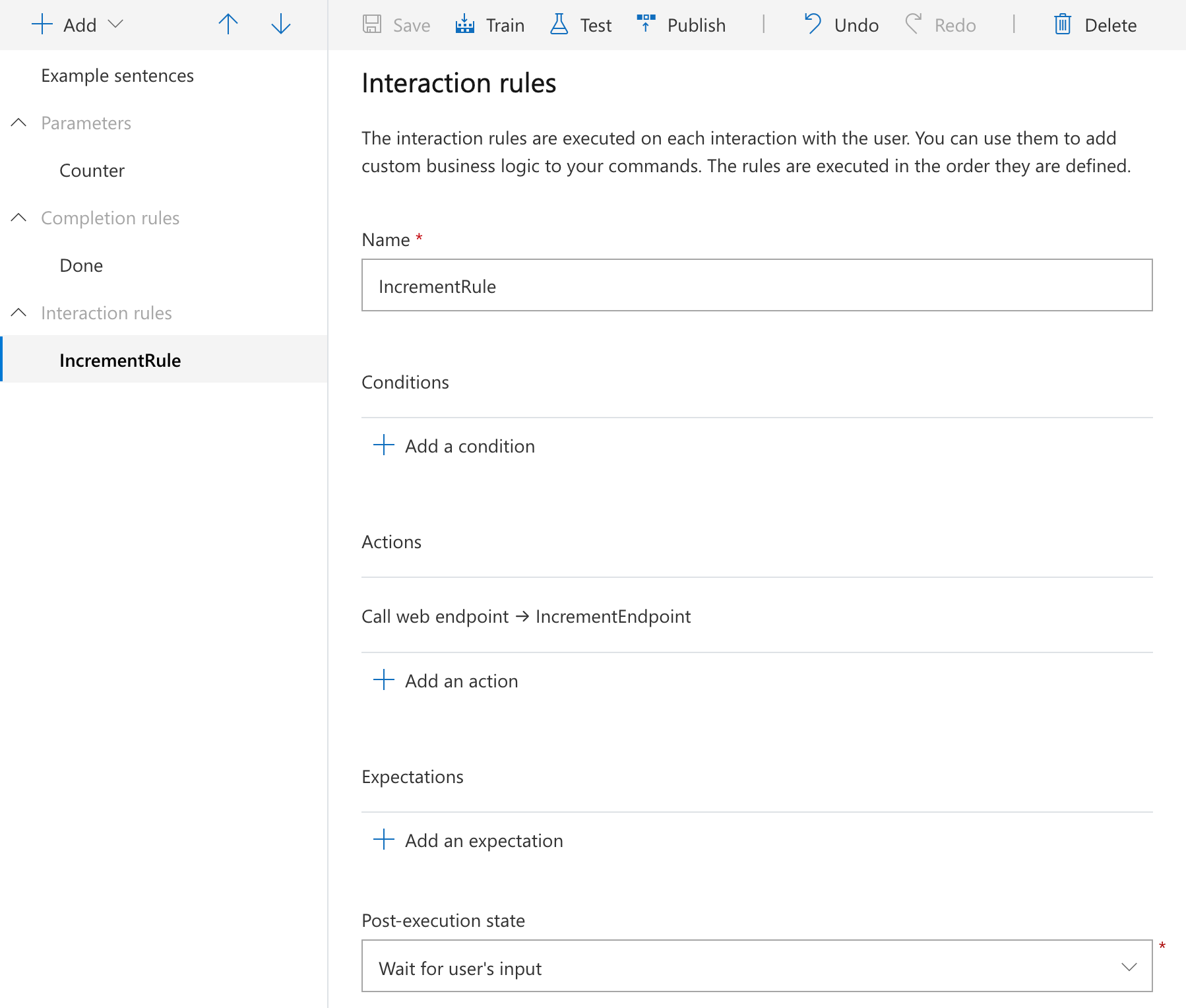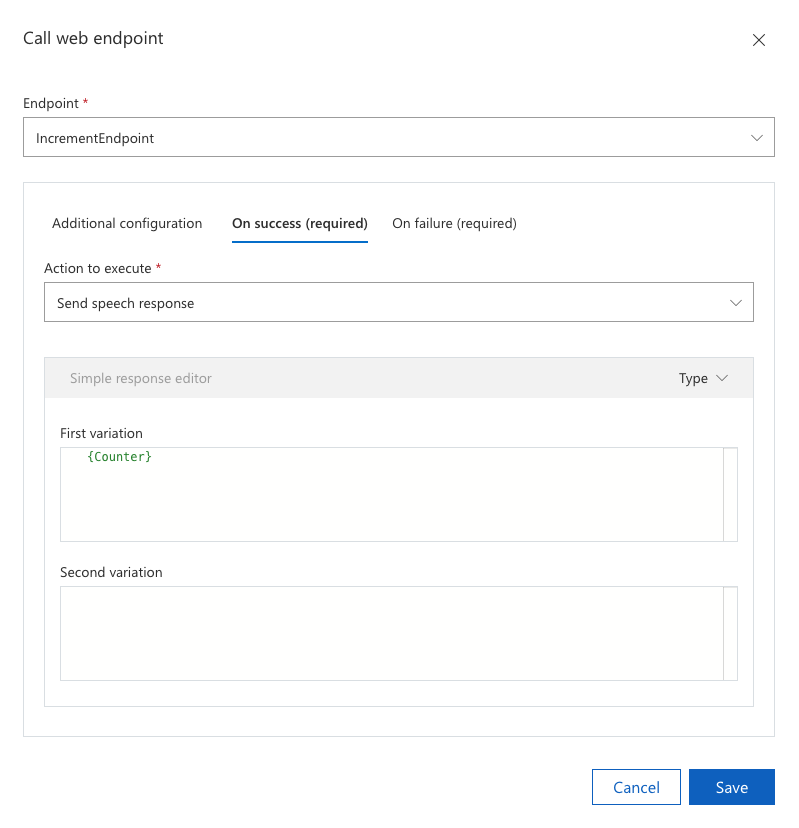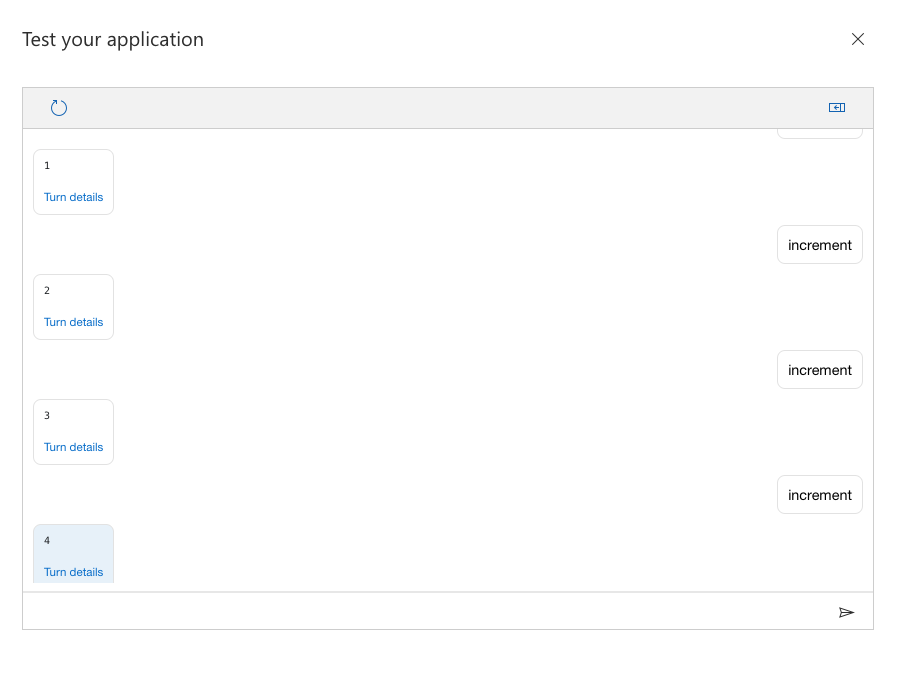Update a command from a web endpoint
Important
Custom Commands will be retired on April 30th 2026. As of October 30th 2023 you can't create new Custom Commands applications in Speech Studio. Related to this change, LUIS will be retired on October 1st 2025. As of April 1st 2023 you can't create new LUIS resources.
If your client application requires an update to the state of an ongoing command without voice input, you can use a call to a web endpoint to update the command.
In this article, you learn how to update an ongoing command from a web endpoint.
Prerequisites
- A previously created Custom Commands app
Create an Azure function
For this example, you need an HTTP-triggered Azure function that supports the following input (or a subset of this input):
{
"conversationId": "SomeConversationId",
"currentCommand": {
"name": "SomeCommandName",
"parameters": {
"SomeParameterName": "SomeParameterValue",
"SomeOtherParameterName": "SomeOtherParameterValue"
}
},
"currentGlobalParameters": {
"SomeGlobalParameterName": "SomeGlobalParameterValue",
"SomeOtherGlobalParameterName": "SomeOtherGlobalParameterValue"
}
}
Let's review the key attributes of this input:
| Attribute | Explanation |
|---|---|
| conversationId | The unique identifier of the conversation. This ID can be generated from the client app. |
| currentCommand | The command that's currently active in the conversation. |
| name | The name of the command. The parameters attribute is a map with the current values of the parameters. |
| currentGlobalParameters | A map like parameters, but used for global parameters. |
The output of the Azure function needs to support the following format:
{
"updatedCommand": {
"name": "SomeCommandName",
"updatedParameters": {
"SomeParameterName": "SomeParameterValue"
},
"cancel": false
},
"updatedGlobalParameters": {
"SomeGlobalParameterName": "SomeGlobalParameterValue"
}
}
You might recognize this format because it's the same one that you used when updating a command from the client.
Now, create an Azure function based on Node.js. Copy/paste this code:
module.exports = async function (context, req) {
context.log(req.body);
context.res = {
body: {
updatedCommand: {
name: "IncrementCounter",
updatedParameters: {
Counter: req.body.currentCommand.parameters.Counter + 1
}
}
}
};
}
When you call this Azure function from Custom Commands, you send the current values of the conversation. You return the parameters that you want to update or if you want to cancel the current command.
Update the existing Custom Commands app
Let's hook up the Azure function with the existing Custom Commands app:
- Add a new command named
IncrementCounter. - Add just one example sentence with the value
increment. - Add a new parameter called
Counter(same name as specified in the Azure function) of typeNumberwith a default value of0. - Add a new web endpoint called
IncrementEndpointwith the URL of your Azure function, with Remote updates set to Enabled.
- Create a new interaction rule called IncrementRule and add a Call web endpoint action.

- In the action configuration, select
IncrementEndpoint. Configure On success to Send speech response with the value ofCounter, and configure On failure with an error message.
- Set the post-execution state of the rule to Wait for user's input.
Test it
- Save and train your app.
- Select Test.
- Send
incrementa few times (which is the example sentence for theIncrementCountercommand).
Notice how the Azure function increments the value of the Counter parameter on each turn.
Next steps
Feedback
Coming soon: Throughout 2024 we will be phasing out GitHub Issues as the feedback mechanism for content and replacing it with a new feedback system. For more information see: https://aka.ms/ContentUserFeedback.
Submit and view feedback for